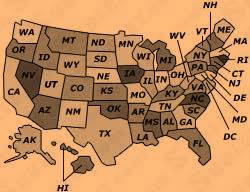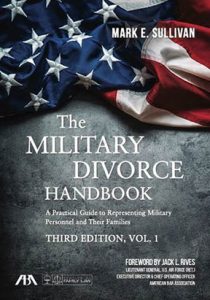O, what a tangled web we weave when first we practice to deceive.
– Sir Walter Scott
Jamie Snellings may have thought she could get away with it. She was caught with her hand in the cookie jar… and an invisible cookie jar, at that.
Jamie’s Deception
After the 2014 filing for divorce in Hawai’i, she and her husband, Jason Snellings, filed their mandatory disclosure forms with information on their assets and accounts. Then Jason found out that Jamie had moved $65,000 to a new account that she had not disclosed – an invisible account – so he filed for a financial restraining order. Jamie later said, “I wanted the court case to be done and… was scared over the threat of sanctions,” and so she told her lawyer to settle the matter quickly with a consent order.
The attorneys quickly arrived at a stipulated divorce decree, and the parties signed the typed order. It covered divorce and custody, with Jason getting primary custody of the children. The judge orally approved the typed settlement and granted the divorce.
Jason’s Deception
The attorneys started preparing the full and final order, but then Jamie’s attorney wrote to the court with objections. The letter said that Jason had not disclosed to Jamie his impending deployment until the day after the June 3, 2015 hearing on the stipulated divorce decree, “when he also informed Jamie that their two children would live with his parents in Virginia as part of a family care plan he had submitted to his military command. Jamie requested a hearing before the family court.” Snellings v. Snellings, NO. CAAP-16-0000704, 2020 Haw. App. LEXIS 77 (Haw. Ct. App., Feb. 28, 2020) at *3-4.
The trial judge was clearly upset, stating at the initial hearing:
| The reason we’re here today is . . . [Jason], you are currently . . . on deployment with the military pursuant to your service and that allegedly you knew about that well in advance of the proceedings in June, but for reasons that I think are manifestly obvious you decided to not reveal that to [Jamie]. [Jamie]’s claim is that that was a material misrepresentation . . . and it would have affected the negotiations between the parties and maybe come up with a different — a different result. And that’s what’s before me. |
Id. at *5. It turned out that Jason had taken the children from Hawai’i to Virginia to live with his parents.
What Happened Next
The court ultimately signed the tendered settlement, since it recited accurately the terms upon which the parties had agreed previously. While stating that the conduct didn’t appear to require the filing of a report to the Office of Disciplinary County of the bar, the court decided to impose $5,000 in sanctions – attorney’s fees and costs – on Jason, and it demanded a detailed affidavit from Jamie’s attorney.
Jamie then filed a motion to vacate or modify portions of the settlement, sought modification of the custody terms, and asked the court to enforce a prior order requiring Jason to transfer a vehicle to her. The response from Jason was a motion to dismiss and a request for a stay of proceedings under the Servicemembers Civil Relief Act, 50 U.S.C. § 3932. The court denied the stay request and ordered the children to be returned to Hawai’i, to be placed in Jamie’s sole custody until Jason returned from deployment. Ultimately the court set aside major portions of the stipulated divorce decree on the basis of fraud. It awarded an additional $12,000 to Jamie in attorney’s fees and costs.
The Court’s Concerns
Much would be lost in the exploration of this case if the court’s statements in open court were omitted. A clear sense of why the court was disturbed by Jason’s conduct and where the court was headed can be gleaned from the following remarks to Jason’s attorney:
| [F]rankly, the Court has very little trust in terms of your client’s actions in this case thus far…. What the Court is concerned about are the allegations that a fraud was perpetrated on the Court…. That’s what the Court is concerned about, that information pertinent to settlement negotiations and relevant to settlement negotiations was intentionally withheld. [M]y understanding of the case, having reviewed the motion, is that the essence of the fraud claim is that [Jason’s] deployment was not disclosed [to Jamie] prior to the time the agreement [for the stipulated divorce decree] was reached…. The intention was to withhold information to get the agreement he wanted is what it’s — it sounds like you’re telling me.
[JASON’S COUNSEL]: No, I don’t believe that’s the case. THE COURT: It may have been because he wanted to ensure his children were safe and protected and all of that stuff, but at the heart of it, it sounds like he withheld information because he felt that would benefit his position. |
Id. at *9-11.
Pulling Back the Curtain
The facts about deployment and the settlement were revealed out in the Court of Appeals decision. The Court noted that:
- Jason received TAD (Temporary Additional Duty) orders to Cuba three months before the settlement was signed. The tour of duty was for nine months.
- Despite the pendency of timesharing and custody issues between the parties, Jason didn’t disclose the assignment orders to Jamie when he received them or within a reasonable time thereof.
- When the parties signed the settlement on custody and timesharing, Jason still had not revealed to Jamie his TAD orders, which required him to report just three days after the typewritten settlement in court.
- The day after the court settlement, Jason told Jamie that he had TAD orders, he was leaving Hawai’i in two days, “and told her that he was sending the children to live with his parents in Virginia for the duration of his TAD.” Id. at *17.
- “Thereafter, [Jamie] discovered that on June 2, 2015, [Jason] had notified the children’s schools that the children’s last day of school would be June 3, 2015 and that they were to be permanently released as they were moving to Virginia…. [Jason] had not disclosed this notification to [Jamie] prior to the parties’ June 3, 2015 agreement at Court…. [Jamie] also discovered that on May 26, 2015 [Jason] had arranged for a 16 foot storage pod to be delivered to his address on May 30, 2015…. On June 6, 2015, [Jason] left Hawai’i with both children and dropped them off at his parent’s house in Virginia.” Id. at *17-18.
The Appellate Decision
In affirming the trial court’s rulings on attorney’s fees and costs, the Court of Appeals noted the following specific findings in the trial court’s order regarding Jason’s conduct:
| [Jason’s] TAD orders and imminent departure from Hawai’i were material facts that should have been disclosed to [Jamie] and her counsel prior to June 3, 2015. [Jason] did not disclose his TAD orders to [Jamie] until June 4, 2015. [Jason] knowingly and intentionally failed to disclose [to Jamie] his TAD orders and his plans to send the children to Virginia… until June 4, 2015 to induce her to agree to the settlement terms that he wanted. |
Id. at *25. The Court upheld the trial court’s other orders in all respects.
Lessons to be Learned
The Snellings case contains several lessons for the family law practitioner and the client. The pointers are not confined simply to cases involving custody and a military family.
“Clean hands” is the first lesson. Be “clean” with the opposing party and the court. Be candid when there are issues of substance which are being overlooked and which could lead to a different result, whether in the courtroom (in a contested case) or in the conference room. Even when the case is being settled “on the courthouse steps,” remember that a lawyer’s duty, as an officer of the court, includes candor to the tribunal. This is not a game of “hide the ball.” A family law matter in court is something that will affect the lives of the parties and the children, perhaps for a long time.
The next lesson involves an unappealed issue, the denial of Jason’s motion for a stay of proceedings under the SCRA, the Servicemembers Civil Relief Act, 50 U.S.C. § 3932. Ordinarily such a motion is granted automatically when the movant sets out the four essential elements of a request: a) a statement as to how his military duties affect his ability to appear, b) a statement as to when he will be available, c) a statement from his commanding officer that the servicemember’s military duties prevent his appearance, and d) the commander’s statement that military leave is not authorized. While the matter did not reach the Court of Appeals, an educated guess is that the denial was based on Jason’s conduct. When a party applying for a stay of proceedings has acted inequitably, most courts will refuse to consider the stay request based on the doctrine of “the sword and the shield.” This doctrine states that the SCRA is intended to be used as a shield to protect the rights of the servicemember, not as a sword to defeat the rights of others. “Fair play” is the key to successful use of the SCRA in slowing down civil proceedings. Bad actors may get bad treatment in court.
A third lesson is: “Good lawyers know the law, but great lawyers know the judge.” Listen to the judge. If there are comments from the bench that affect your case, pay heed and try to follow where the court is leading. In this case the court on numerous occasions pointed out its concerns about the issues of truth, credibility, fraud and the concealment of material facts in order to gain a tactical advantage. These statements are like red flags before a hurricane – heed them and act accordingly. One who doesn’t will often “reap the whirlwind.”
Finally, a lesson which Jason should have been given early in the case is “When you’re in a hole, stop digging.” Disregarding the substantial claims as to his misconduct, Jason kept on filing motions and resisting the court’s clear concerns about his deceptions. Counsel has a duty to warn the intransigent client of the likely consequences of his actions. In the appropriate case, counsel should withdraw when his or her client refuses to bring his conduct into compliance with the court’s rulings and concerns. It was clear from the start how the judge was leaning, and the court’s remarks left little doubt that Jason had “gamed the system” in gaining a settlement without revealing his position. In effect, Jason declared “I won” in a card game and collected all the poker chips on the table without showing his hand. The displeasure of the trial judge and the Court of Appeals regarding such self-dealing is obvious.
* * *
–Mark Sullivan




















